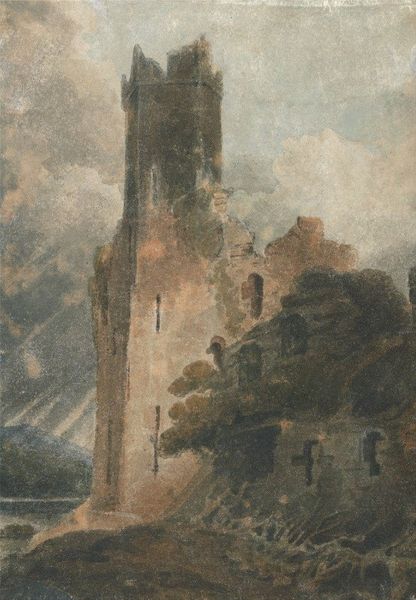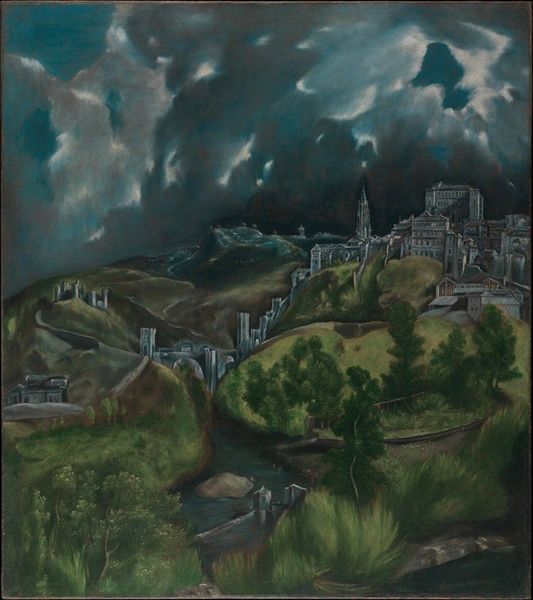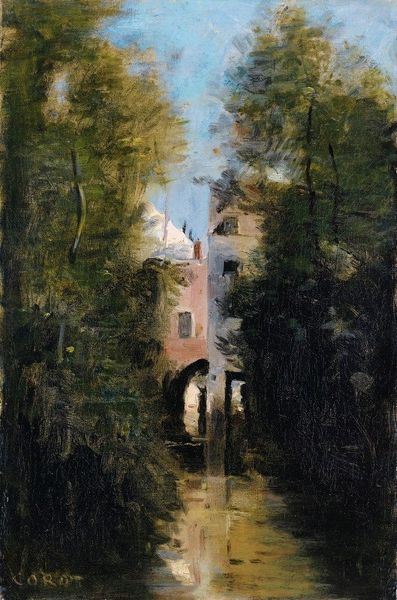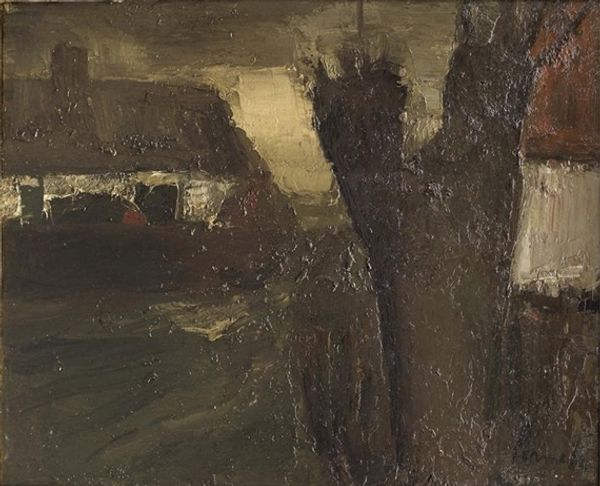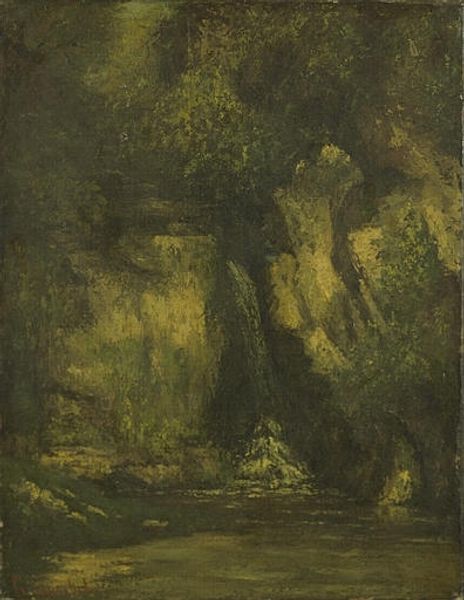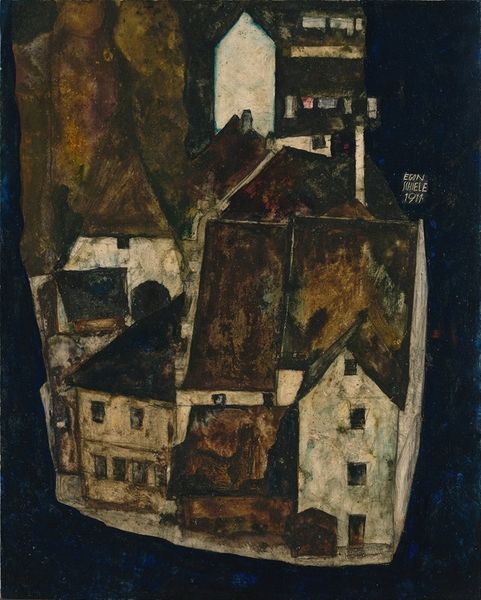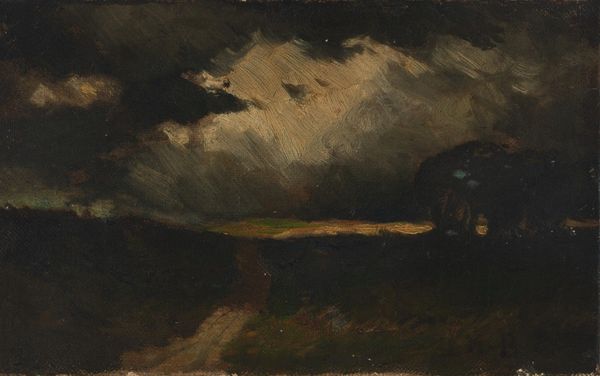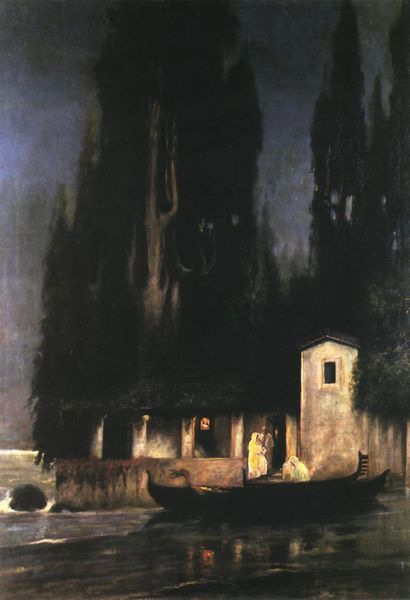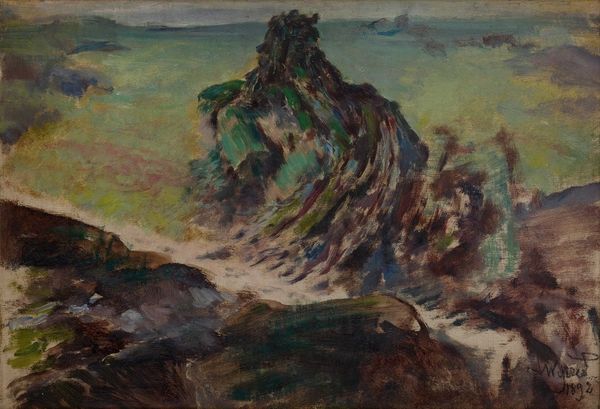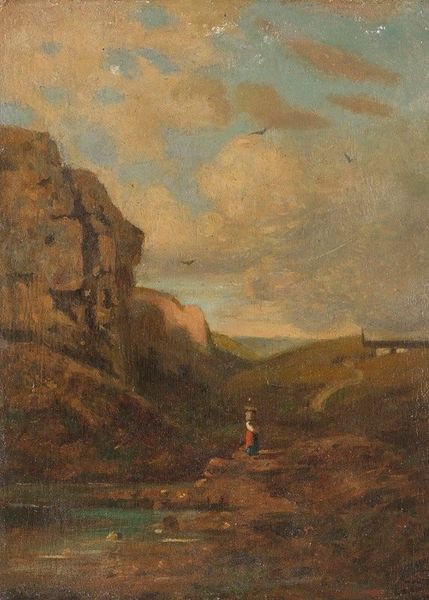
tempera, oil-paint
#
tempera
#
oil-paint
#
landscape
#
figuration
#
oil painting
#
romanticism
#
history-painting
#
realism
Copyright: Public Domain: Artvee
Arnold Böcklin painted this landscape in oil sometime in the late nineteenth century. The painting shows a ruined building on a cliff overlooking the sea. We can interpret this image as a commentary on the transience of human achievement, the relationship between humanity and nature, and the sublimity of nature. Böcklin worked in Switzerland and Germany during a time of great social change, with the rise of industrialization and urbanization challenging traditional ways of life. His work reflects a longing for a lost past, and a sense of unease about the future, exemplified here by the ruined building. The location suggests the influence of the Grand Tour, where members of the European elite visited classical ruins to demonstrate their cultural knowledge. The sublime, dark power of nature is emphasized by the sea. These themes are typical of Symbolist art, and art historians find them reflected in Böcklin's other paintings such as 'Isle of the Dead'. Understanding the social and intellectual context in which Böcklin was working helps us to appreciate the richness and complexity of his art.
Comments
No comments
Be the first to comment and join the conversation on the ultimate creative platform.

